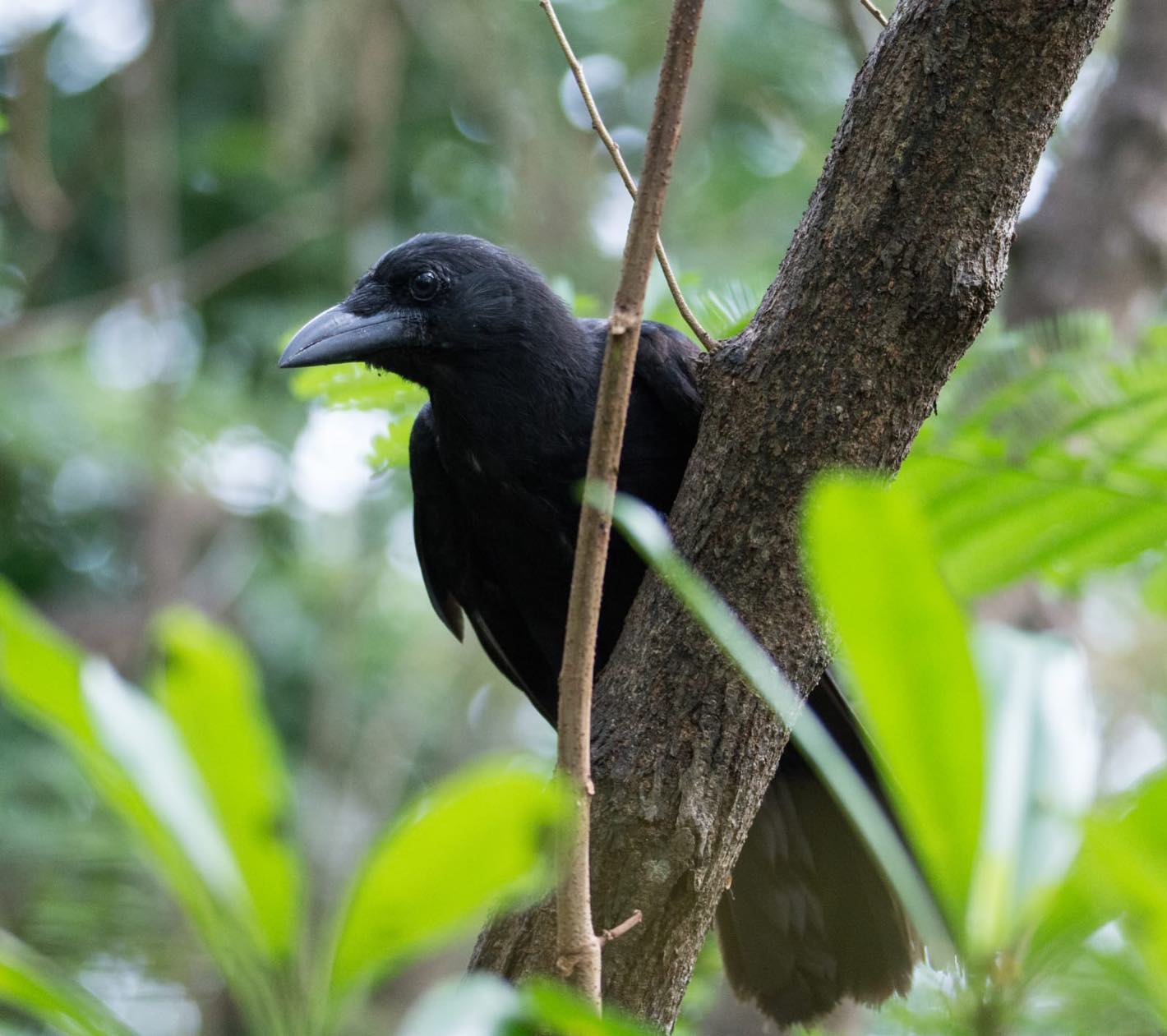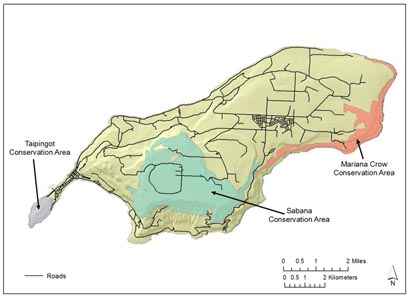About Mariana Crow Recovery Project
The Mariana Crow, or Aga, originally occurred on the island of Guam and the neighboring island of Rota in the Mariana Island chain of western tropical Pacific Ocean. The Aga has become locally extinct from Guam in recent decades, along with most native forest birds there, due to the incidental introduction of the Brown Tree Snake (Boiga irregularis) after World War II. The Aga now exists only on the island of Rota. Despite the absence of the Brown Tree snake on Rota, this population has been in decline for the past 30 years. Going from an estimated 1300-1400 individuals in the 1980's to 150-200 individuals currently, the Aga is now considered critically endangered.
The University of Washington has been involved with the Mariana Crow research and recovery efforts since 2005. We work in collaboration with the US Fish and Wildlife Service, Commonwealth of the Northern Mariana Islands Department of Fish and Wildlife, San Diego Zoo and Institute for Wildlife Studies to understand and protect this species from extinction. Join us in learning more about these unique, intelligent and imperiled birds and the beautiful island of Rota!

Join Our Facebook Page!
There's more to learn about the Mariana Crow Recovery Project.
Latest News
Stay up to date with the latest news about the Mariana Crow Recovery Project.
View Photos
View our photo album of team members interacting with the Mariana Crows on Rota.
View Videos
View our collection of videos to see the Mariana Crows in their natural habitat.
Mariana Crow Conservation Area

The Marianas Crow Conservation Area (MCCA)was created by Division of Fish and Wildlife (DFW) regulation ( Subchapter 85-30.4 of the CNMI Administrative Code ) in order to "insure appropriate use of the MCCA for the enjoyment and general welfare of the public while protecting the area in its natural state to serve as a refuge for native wildlife, with emphasis on the Mariana Crow."
MCCA is a no-take area for plants and wildlife except by permit from DFW. Excepted is the taking of plants for use in traditional healing practices. No pets or livestock are allowed within the MCCA. Motorized vehicles are not allowed except on the unpaved road to the Pictograph Cave. Trails within the MCCA are open to the public from 30 minutes before sunset to 30 minutes after sunset.